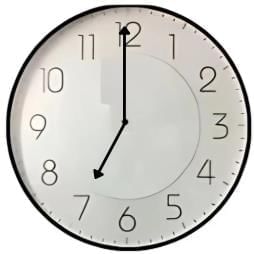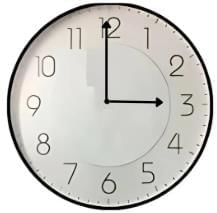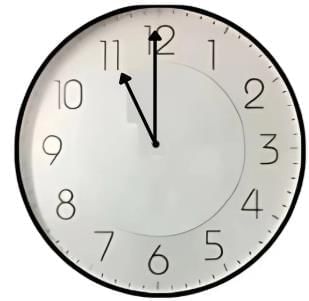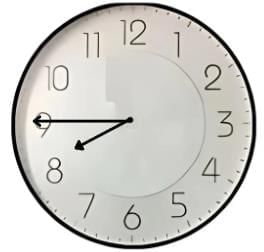Worksheet Solutions: Time | Mental Maths - Class 1 PDF Download
Q1: Show the Correct Time
(i)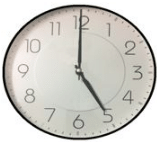 (a) 12:00
(a) 12:00
(b) 5:00
(c) 6:00
(d) None of these
Ans: (b)
(ii)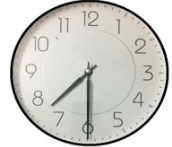 (a) 6:30
(a) 6:30
(b) 7:35
(c) 7:30
(d) None of these
Ans: (c)
(iii)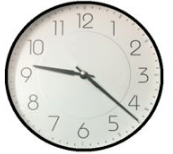 (a) 9:22
(a) 9:22
(b) 4:42
(c) 10:42
(d) None of these
Ans: (a)
(iv)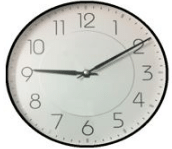 (a) 2:10
(a) 2:10
(b) 10:10
(c) 9:10
(d) None of these
Ans: (c)
(v)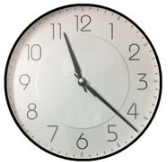
(a) 4:55
(b) 11:22
(c) 12:42
(d) None of these
Ans: (b)
Q2: Draw the hands to show the correct time.
(i) 7 o’clock
Ans.
(ii) 3 o’clock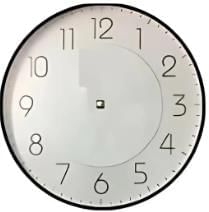
Ans.
(iii) 11 o’clock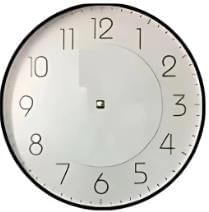
Ans.
(iv) Quarter past 4
Ans.
(v) Quarter to 9
Ans.
Q3. Multiple Choice Questions (MCQs)
(i) Sunrise happens around 4:45 _____
(a) AM
(b) PM
(c) AM/PM
(d) None of these
Ans. (a) AM
The sun rises in the morning, and morning time is called AM.
(ii) Bob take his dinner at 9:30 _____
(a) AM
(b) PM
(c) Noon
(d) None of these
Ans. (b) PM
Bob eats dinner at night, and night time is called PM.
(iii) 3 hours after 12:00 noon is _____
(a) 2:00 AM
(b) 3:00 AM
(c) 3:00 PM
(d) None of these
Ans. (c) 3:00 PM
12:00 noon means midday, when the sun is high in the sky.
If we add 3 hours:
1 hour later → 1:00 PM
2 hours later → 2:00 PM
3 hours later → 3:00 PM
(iv) 2 hours before 12:45 AM is _____
(a) 11:45 PM
(b) 10:45 AM
(c) 11:45 AM
(d) 10:45 PM
Ans. (d) 10:45 PM
12:45 AM is just after midnight
If we go 1 hour back, it becomes 11:45 PM (night time).
If we go 2 hours back, it becomes 10:45 PM (night time).
(v) Convert 5 days 9 hours into hours
(a) 119 hours
(b) 129 hours
(c) 127 hours
(d) None of these
Ans. (b) 129 hours
1 day = 24 hours
So, 5 days = 5 × 24 = 120 hours
Add the extra 9 hours:
120 + 9 = 129 hours
(vi) Convert 5 hours 45 minutes into minutes
(a) 345
(b) 245
(c) 445
(d) None of these
Ans. (a) 345
(vii) How many minutes are there from half past 4 to quarter past 5?
(a) 25 Minutes
(b) 30 Minutes
(c) 40 Minutes
(d) 45 Minutes
Ans. (d) 45 Minutes
1 hour = 60 minutes
5 hours = 5 × 60 = 300 minutes
Add the extra 45 minutes:
300 + 45 = 345 minutes
(viii): How many hours and minutes are there from quarter past 5 to half past 8?
(a) 2 hours 30 minutes
(b) 3 hours 15 minutes
(c) 3 hours 30 minutes
(d) None of these
Ans. (b) 3 hours 15 minutes
Quarter past 5 means 5:15.
Half past 8 means 8:30.
From 5:15 to 8:15 = 3 hours.
From 8:15 to 8:30 = 15 minutes.
So total = 3 hours 15 minutes.
|
39 videos|158 docs|19 tests
|
FAQs on Worksheet Solutions: Time - Mental Maths - Class 1
| 1. What are the different types of clocks used to measure time? |  |
| 2. How do time zones affect the measurement of time globally? |  |
| 3. What is the significance of the 24-hour clock system? |  |
| 4. How is time measured in scientific experiments? |  |
| 5. What historical events led to the standardization of timekeeping? |  |

